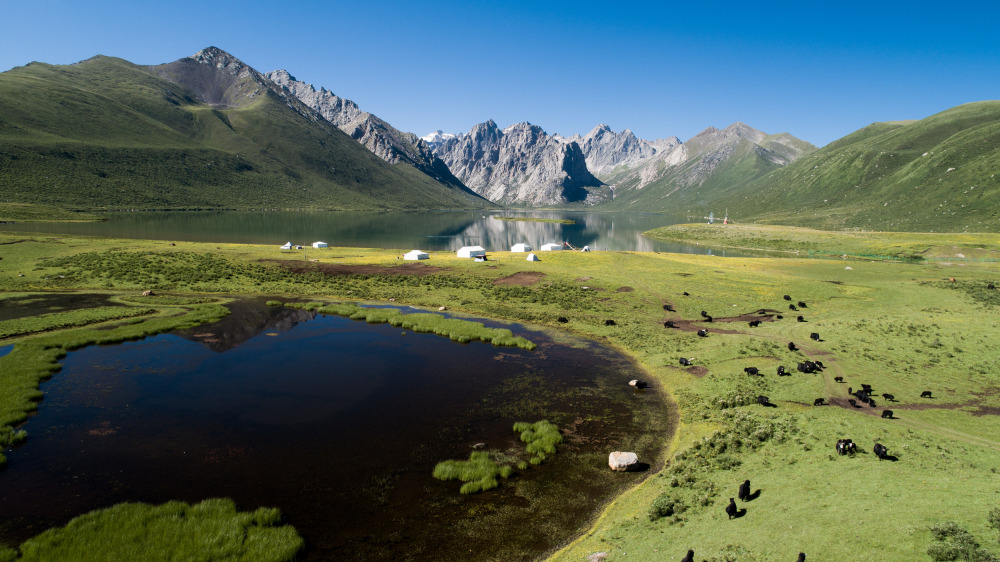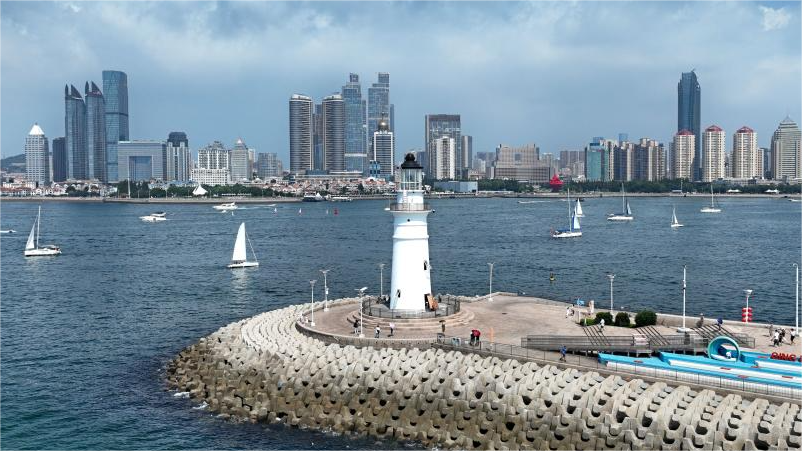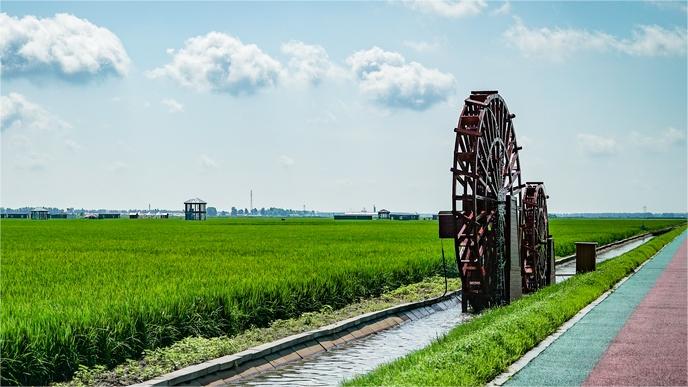Expedition shows Xizang's improving biodiversity

Aerial photo shows the scenery at Mt Nyanpo Yutse in Tibetan autonomous prefecture of Golog of Northwest China's Qinghai province. Qinghai province, located in Northwest China, much of which lies on the Qinghai-Tibet Plateau, is home to the headwaters of the Yangtze, Yellow, and Lancang rivers. (Photo/Xinhua)
A team making a scientific expedition to the Qinghai-Tibet Plateau has announced 10 findings regarding the region seven years after their expedition started. The expedition shows China's achievements in preserving and promoting biodiversity as well as the urgency with which the world must curb climate change.
With many of its areas more than 3,000 meters above sea level, the plateau is home to many unique species and large stretches of wildness. That over 3,000 new species have been found there shows the ecology of the plateau is improving.
The achievement is commendable considering the fact that the population of the Xizang autonomous region has risen from 2.92 million in 2008 to 3.65 million in 2023 while the region's GDP has risen from 39.8 billion yuan ($5.49 billion) to 239.3 billion yuan during the same period. The autonomous region has also become a popular tourist destination. From July 2006, when the Qinghai-Xizang railway opened, till March this year 36.8 million passengers traveled on the railway.
In other words, the biodiversity of the plateau and tourists' pursuit of happiness are both promoted in a mutually harmonious way without coming at the cost of each other, which is also the most sustainable way of preserving biodiversity because the residents also have their interests ensured.
The Qinghai-Tibetan Plateau has long been known as the Asian water tower because of its rich water reserves and its being the source of multiple rivers. However, at the moment with the glaciers melting and other causes, the region's ability to reflect sunlight and heat is being reduced. This, in turn, might lead to more heat being absorbed and more glaciers melting, increasing the frequency of extreme climate events.
At a time when the necessity to curb global climate change is becoming imperative, the disappearing glaciers should ring an alarm and make the world redouble its efforts to put the brake on climate change.
Photos
Related Stories
- 70 years on, Tibetan autonomous prefecture marches towards modernization
- Picturesque views of Yani national wetland park in SW China’s Xizang
- Tibetan opera performances staged in Lhasa to celebrate traditional Shoton Festival
- Traditional Shoton Festival celebrated in Lhasa, SW China's Xizang
- China's Xizang introduces novel research model for dairy cows
- View of Basomtso scenic area in Nyingchi, SW China
Copyright © 2024 People's Daily Online. All Rights Reserved.









